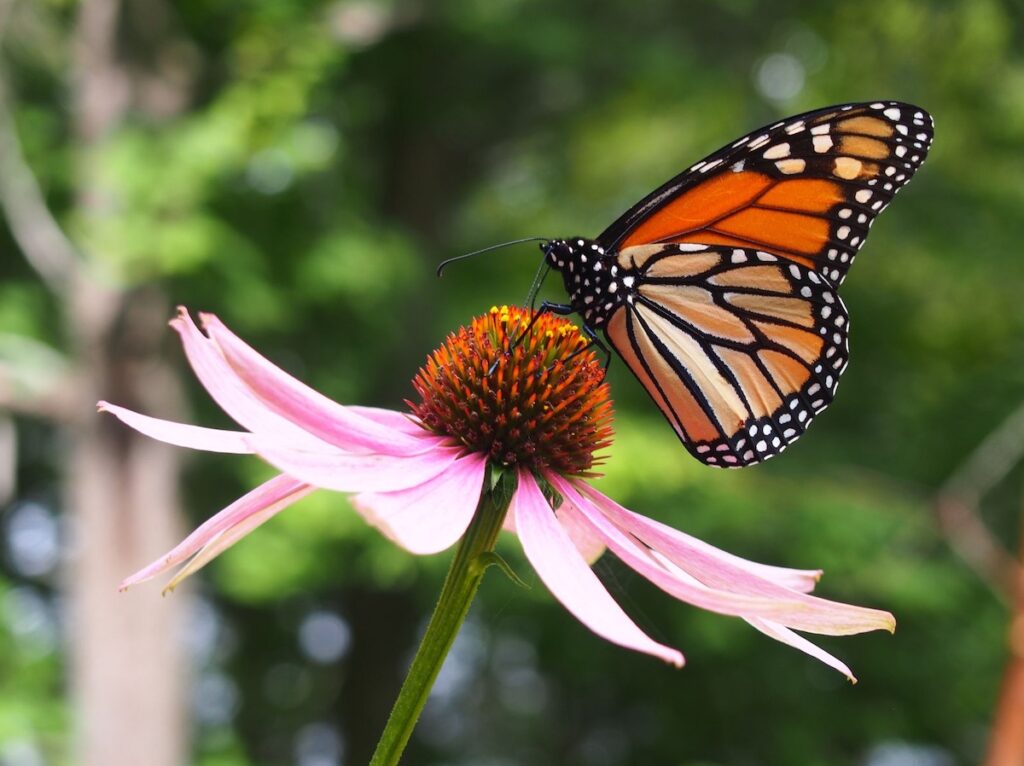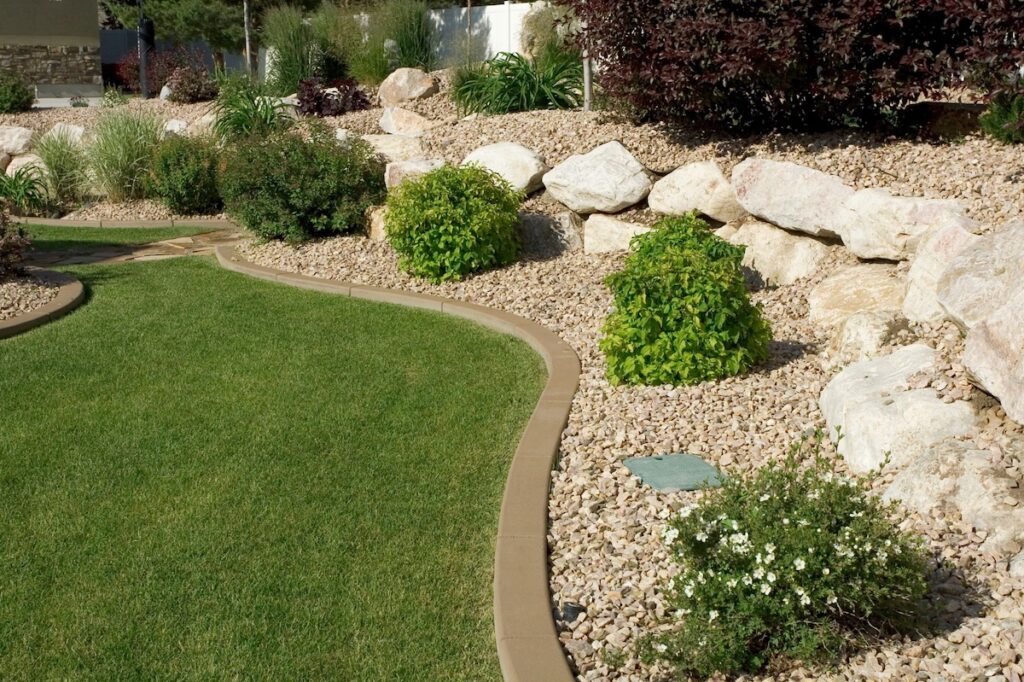Owning a lakehouse on Lake Martin is all about enjoying the water and relaxing in scenic surroundings. That doesn’t mean you should spend your days off maintaining a high-maintenance yard. The right landscaping design can significantly enhance your property’s curb appeal, help protect the shoreline, and minimize the time you spend on upkeep. Here are some simple strategies for creating a beautiful, low-maintenance landscape that fits the relaxed Lake Martin lifestyle.
Choose Native Plants for Natural Beauty
One of the most effective ways to reduce landscaping maintenance is by incorporating native plants. Native species to Alabama are well-adapted to the local climate, meaning they require less water, fertilizer, and pesticides than non-native varieties.
Here’s a list of native plants that are well-suited for landscaping in the Lake Martin area. These plants are drought-tolerant, adaptable to local soil conditions, and require minimal care, making them perfect for a low-maintenance landscape.

1. Muhly Grass (Muhlenbergia capillaris)
- Description: This ornamental grass is known for its striking pinkish-purple blooms in the fall. It’s drought-tolerant, adds texture, and requires little maintenance once established.
- Best for: Groundcover, borders, and accents.
- Muhly Grass Information
2. Purple Coneflower (Echinacea purpurea)
- Description: Known for its large, daisy-like flowers with purple petals, this plant is perfect for attracting pollinators. It thrives in well-drained soil and can withstand the heat of Alabama.
- Best for: Flower beds and naturalized gardens.
- Purple Cone Flower Information
3. Daylilies (Hemerocallis spp.)
- Description: Daylilies are hardy, low-maintenance, and come in a variety of colors. They can grow in almost any soil type and tolerate both dry conditions and occasional periods of rain.
- Best for: Flower beds and borders.
- Daylilies Information
4. Southern Red Oak (Quercus falcata)
- Description: A native oak species that provides excellent shade and has a strong root system that helps prevent soil erosion, making it ideal for areas near the shoreline.
- Best for: Large landscapes and shady areas.
- Southern Red Oak Information
5. Black-eyed Susan (Rudbeckia hirta)
- Description: This perennial features bright yellow flowers with dark centers. It’s hardy, drought-tolerant, and attracts butterflies, making it a great addition to low-maintenance gardens.
- Best for: Flower beds and wildflower gardens.
- Black-Eyed Susan Information
6. Sweetbay Magnolia (Magnolia virginiana)
- Description: A smaller, evergreen magnolia that does well in wetter soils, making it ideal for shoreline areas. It has fragrant white flowers and can be used as a specimen tree or hedge.
- Best suited for: shoreline planting, specimen trees, and hedges.
- Sweetbay Magnolia Information
7. Spicebush (Lindera benzoin)
- Description: A small shrub that thrives in shaded areas and produces fragrant yellow flowers in early spring. It’s ideal for adding fragrance and interest to shady spots.
- Best for: Shaded garden areas, natural landscapes, and woodland edges.
- Spicebush Information
8. Creeping Jenny (Lysimachia nummularia)
- Description: A low-growing groundcover with round, bright green leaves that forms a dense mat. It’s great for suppressing weeds and can tolerate wet conditions.
- Best for: Groundcover and erosion control near water.
- Creeping Jenny Information
9. Native Azaleas (Rhododendron spp.)
- Description: These deciduous azaleas are hardy and bloom in vibrant colors in spring. They’re well-suited for shaded or partially shaded areas and are relatively low-maintenance once established.
- Best for: Shaded areas, woodland gardens, and foundation plantings.
- Native Azalea Information
These native plants will not only enhance your Lake Martin landscape but also create a more sustainable and low-maintenance environment. They are adapted to the region’s climate and soil conditions, making them ideal for homeowners in the lake area who want to enjoy their property without incurring excessive maintenance costs.

Use Mulch and Groundcovers to Reduce Weeding
Weeding is one of the most time-consuming tasks for any homeowner. However, you can significantly reduce the need for weeding by using mulch and groundcovers in your landscaping. Mulch helps retain moisture in the soil and prevents weeds from sprouting, while also providing a finished, polished look to your garden beds. Pine straw, river rock, or shredded bark are all great mulch options that blend beautifully with the natural aesthetic of a lakefront home.
In addition to mulch, groundcovers such as creeping thyme, vinca, or clover are excellent at suppressing weeds. These low-growing plants fill in spaces and create a dense carpet of greenery, minimizing the opportunity for weeds to take root. Plus, many of these plants are low-maintenance and thrive with minimal care.

Strategic Hardscaping for Low Upkeep
Another way to reduce your yard work is by incorporating hardscaping elements, such as stone paths, patios, and fire pits. These features not only serve a practical function but also add beauty and character to your landscape. Stone paths or gravel walkways create an attractive way to navigate your property, eliminating the need for mowing or trimming. Patios can serve as a relaxing outdoor space for entertaining guests or enjoying a quiet evening by the water, while fire pits can extend your enjoyment of the outdoors into the cooler months.
Hardscaping offers the added benefit of minimizing lawn care. When you replace grass with stone or gravel in high-traffic areas, you reduce the amount of time spent mowing, watering, and fertilizing. These elements, when strategically placed, can transform your yard into a functional yet low-maintenance oasis that’s perfect for busy lakefront homeowners.
By making thoughtful choices with native plants, groundcovers, and hardscaping features, you can create a landscaping design that enhances the beauty of your property while minimizing the time and effort required for maintenance.








